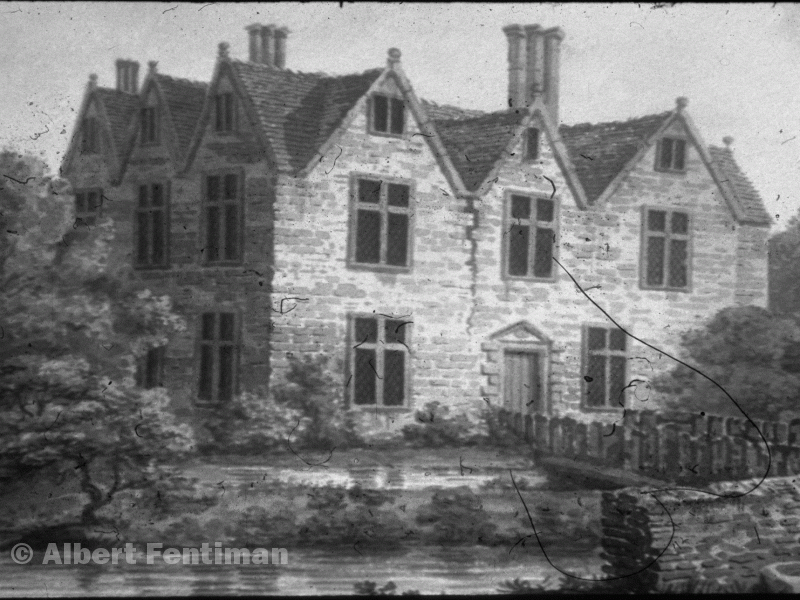The old Peddimore Hall, according to Sir William Dugdale in his Antiquities of Warwickshire published in 1656, was then nothing but a deserted ruin surrounded by a moat. It had been built as a prestigious house half-way between Wigginshill and Walmley for a branch of the powerful Arden family in the twelfth century. The hall was built within the moat on a raised platform – this platform was made from the material excavated to make the double moat, or moat and fishponds. This raised the level of the ground inside the moat to give dry foundations for the hall, and the digging of the moat helped to drain the surrounding waterlogged land so that it could be brought into cultivation.
Peddimore was part of the Castle Bromwich Hall estate which was purchased by Sir Orlando Bridgeman in 1657. It was sold to William Wood, a relative of George Pudsey of Langley Hall, who built a new Peddimore Hall on the site of the old one in 1659. The design of the building has been attributed to the nineteen-year-old William Wilson, a stone-mason from Leicester where the family had connections. The new Hall has some features in common with Wilson’s splendid Moat House in Lichfield Road, and incorporates some of the Palladian rules of proportion popularised in England by Inigo Jones thirty years earlier.
The present hall is a double-range brick building with stone quoins, and is the result of a very extensive re-building in 1810, when the original house was about to fall down. An eighteenth century illustration of Peddimore Hall in the Aylesford Collection at Birmingham Reference Library shows a building of quite different appearance from today’s house, so much so that its identity has been questioned. Some of the details in the old illustration, such as the rather crude mullion and transom windows and the pediment above the doorway with its inscription “Deus noster refugium” show that it almost certainly is Peddimore Hall. The work of 1810 has removed the fancy gables and given the hall a plain roof, but traces of the huge crack in the frontage of the old building can still be seen today.

